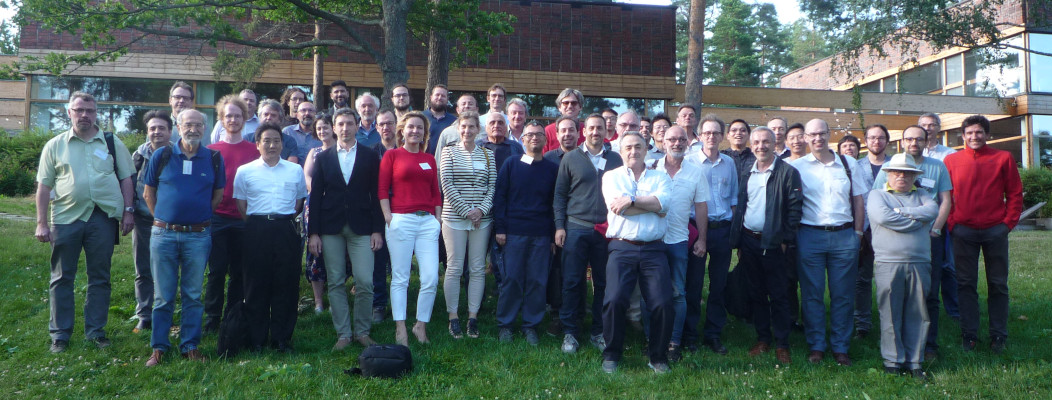|
Participants
|
Description
|
Country
|
|---|
|
P1
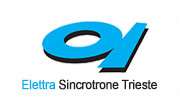
ST (Coordinator)
|
Elettra – Sincrotrone Trieste S.C.p.A.
ST is an international research centre specialized in generating high-quality synchrotron and free-electron laser light and applying it in materials science. Every year ST hosts more than 1000 scientists from more than 50 countries thus representing a gravity centre for all scientific initiatives in Italy, Europe and worldwide.
ST has built and operates two Synchrotron Radiation sources: the third generation storage ring Elettra and more recently the Free Electron Laser FERMI. Elettra is routinely operated in top-up mode, at energies of 2.0 and 2.4 GeV providing 23 operational beamlines (3 more are currently under commissioning). FERMI is a fourth generation light source that started its operation at the end of 2010 and open to users since 2012 with 3 operating beamlines. It is one of the two existing installations of this kind in Europe, the other one being FLASH in Hamburg. With respect to FLASH, FERMI offers complementary characteristics since it exploits the novel operational scheme (seeding) allowing complete control and reproducibility of the photon beam characteristics such as wavelength and intensity. Moreover, FERMI allows for the control of the photon beam polarization.
ST is associated with IAEA, the International Atomic Energy Agency and is part of the primary network for science and technology of the CEI, the Central European Initiative. Elettra is in close relationship with the National Laboratory TASC (IOM-CNR), a research centre active in solid-state physics, nano and materials sciences, micro-manufacturing and synchrotron radiation, which operates on the same site, and has established enduring working relationships with important Italian and foreign partner institutions, including various CNR (National Research Council) bodies, the Academies of Science of Austria and the Czech Republic, UNESCO’s International Centre of Theoretical Physics (ICTP), the International School of Advanced Studies (SISSA), the Indian Institute of Science and several Universities in Italy and Europe.
|
ITALY
|
|
P2
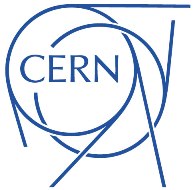
CERN
|
European Organization for Nuclear Research
CERN is the world's largest particle physics centre and operates the world’s largest complex of particle accelerators. The 60-year history of CERN is marked with impressive achievements in the construction and operation of powerful linear and circular accelerators. At the end of 2009, CERN brought into operation the Large Hadron Collider (LHC). With proton-proton collisions at 14 TeV, the LHC will be the most powerful accelerator in the world, awaited so eagerly by the particle physics communities on all continents. CERN has experience in managing the largest world accelerator infrastructures and by its very nature of International Organization the expertise in leading large-scale collaborations involving a large number of institutes from all over the world. CERN has a long and solid experience in the EU Framework Programmes and the CERN administrative, legal and financial services are competent to process all issues the consortium may have to face, including at the highest political level if required. Over several decades, CERN has developed and maintained leading expertise in various fields, in particular accelerator physics, radio frequency cavities, magnet design, beam collimation and superconducting technologies.
|
INTERNATIONAL
|
|
P3

STFC
|
Science and Technology Facilities Council – Daresbury Laboratory
STFC is one of the UK’s seven publicly funded Research Councils, supporting Particle Physics and Astronomy, enabling access to international facilities such as CERN and ESRF, and national facilities such as the Diamond Light Source, ISIS spallation source and Central Laser facility. STFC has an annual budget of over £400M, and employs over 1600 people, principally within its Daresbury and Rutherford-Appleton National Laboratories. Preparation for future FEL facilities is a significant theme of STFC research; STFC produced the design for NLS, a 4th generation superconducting FEL facility for the UK, is actively engaged in FEL projects such as Swiss-FEL, and is leading the implementation of the CLARA FEL Test Facility at Daresbury Laboratory.
|
UNITED KINGDOM
|
|
P4
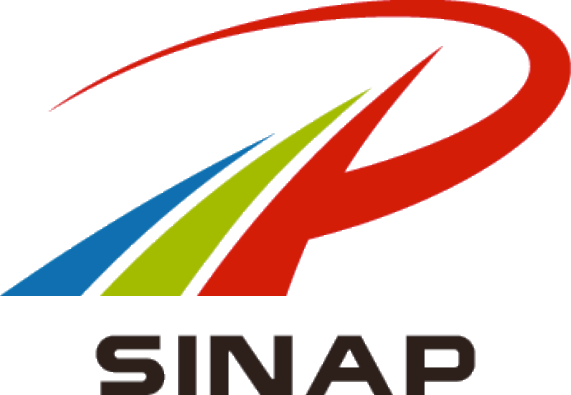
SINAP
|
Shanghai Institute of Applied Physics, Chinese Academy of Sciences
SINAP was established in 1959 and named as Shanghai Institute of Nuclear Research before June 2003, Shanghai Institute of Applied Physics (SINAP), is one institute of the Chinese Academy of Sciences (CAS), which covers comprehensive researches in photon science, nuclear science and technology, and interdisciplinary studies, and in promoting industrial development of the scientific and technological achievements. It has two campuses occupying a total area of 47 hectares, is located in Shanghai Zhangjiang Hi-Tech Park and Jiading district, the satellite township of science and technology in Shanghai. SINAP has been making efforts towards developing it in about 15 years into one advanced photon science centre and multi-disciplinary research base combining nuclear science and technology with other disciplinary of sciences. SINAP research is focused mainly on accelerator physics and techniques, advanced photon science, nuclear science and technology (excluding those for arms) and interdisciplinary studies.
SINAP has built the Shanghai Synchrotron Radiation Facility (SSRF), the biggest scientific project in China, and has been running SSRF for users for five years successfully. Meanwhile, SINAP has been developing the Free Electron Lasers for several years, and recently Shanghai Soft X-ray Free Electron Lasers (SXFEL) has been approved by the Chinese Central Government, which will be the R&D of future hard X-ray FEL project at SINAP.
Several key technologies have been developing for the photon science centre. High gradient accelerating structure will be a crucial technology for future compact hard X-ray FEL, which total length is limited to 580m reaching 6.5GeV. Shanghai Key Laboratory of Superconductive Radio-Frequency Cavity Techniques has developed a prototype of single-cell and 5-cell superconducting cavities, and it will be a crucial basis for future storage ring light source. Undulator technology has also been developed for several years, and many products are running at different light sources in many countries, and in particular short-period in-vacuum undulator is being developed for compact FEL right now.
|
CHINA
|
|
P5

IASA
|
Institute of Accelerating Systems and Applications
IASA has been founded in 1994 in order to promote research and postgraduate studies in the Greek University system. It is affiliated with three University Departments: Physics, Informatics and Medicine of the National & Kapodistrian University of Athens (NKUA) and three University Engineering Schools: Electrical & Computer Engineering, Chemical Engineering and Applied Mathematical & Physical Sciences of the National Technical University of Athens (NTUA). The National & Kapodistrian University of Athens and the National Technical University of Athens, which equally partake in IASA, are the oldest and most prestigious institutions of higher learning in Greece, having about 180 years of parallel life.
IASA is charged with pursuing research and promoting graduate studies in areas where accelerators and accelerator related technologies play a major role. Its cross-disciplinary character and its superb infrastructure in enabling technologies have proven to provide particularly attractive and fertile ground a number of technology-driven scientific fronts.
IASA is an autonomous legal entity governed by a Board of Directors elected by the governing bodies of the two Universities and it is managed by a directorate appointed by the Senates of the two Universities. Its developmental program and its operating funds are directly provided by the Ministry of Education and through competitive research grants primarily from the Ministry of Development and the European Union.
IASA is currently engaged in research projects in the following areas: Accelerator Science/Engineering, Microwave Engineering, Automated Control, Nuclear and Particle physics, Nuclear medicine and Imaging, Scientific Computing, Environmental Physics Telecommunications.
|
GREECE
|
|
P6
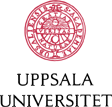
UU
|
Uppsala Universitet
UU is since many years a member of the CLIC/CTF3 collaboration and has since 2006 built up the Two Beam Test Stand (TBTS) at CTF3 devised to demonstrate the feasibility of the CLIC's two-beam acceleration concept. The EuCard and NorduCLIC collaboration with Scandinavian partners from Norway and Finland is enabling us to do research on highgradient acceleration in Uppsala (DC breakdown) and at the 12 GHz test stands at CERN.
UU is well embedded in the accelerator research activities by participating the 7th European Framework Program EuCARD2, TIARA, ARIES, and AMICE. Apart from the activities related to CLIC, UU is involved in the construction of the European XFEL and European Spallation Source (ESS). The involvement in the ESS led to the construction of FREIA, a major accelerator RF test laboratory in Uppsala with the first task of developing and RF high power testing the superconducting spoke section of the ESS linear proton accelerator.
|
SWEDEN
|
|
P7

UoM
|
The University of Melbourne
The University of Melbourne is Australia’s highest ranking university at number 33 in the world. It has over 40,000 research and undergraduate students and one of the largest physics departments in Australia. The Experimental Particle Physics group has been a long time member of the ATLAS Collaboration at CERN. Since 2010 as part of the Australian Collaboration for Accelerator Science the university has been a member of the CLIC Collaboration and in 2016 joined the FCC Collaboration, both at also at CERN.
|
AUSTRALIA
|
|
P8
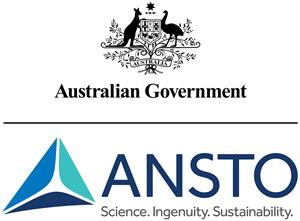
ANSTO
|
Australian Nuclear Science and Technology Organisation
The Australian Synchrotron, operated by the Australian Nuclear Science and Technology Organisation, is a light source facility that is one of the largest pieces of science infrastructure in the Southern Hemisphere and has been in operation since 2007. It employs 120 staff and has over 4,000 beamline users through the facility in the past seven years. It is run by ANSTO which has over 1200 staff and an annual budget of over $500M. The Australian Synchrotron accelerator complex consists of a 100 MeV Linac, a 100 MeV-3 GeV booster synchrotron and a 3 GeV storage ring, which set a world record low vertical emittance of less than one picometer radians.
The Accelerator Science and Operations group at the Australian Synchrotron have expertise in the operation, development and use for Accelerator Physics research of the accelerator complex which consists of a 100 MeV linac, a 3 GeV booster synchrotron and a 3 GeV storage ring synchrotron radiation source.
|
AUSTRALIA
|
|
P9
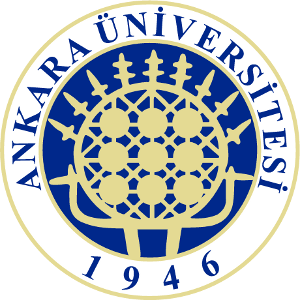
UA-IAT
|
Ankara University Institute of Accelerator Technologies
Institute of Accelerator Technologies has been established as one of the research institutes of Ankara University in 2011 as governmental initiative to fund research and development activities on accelerator technologies in Turkey. It has public body with non-profit organization.
UA-IAT is in charge to construct and operate Turkish Accelerator and Radiation Laboratory in Ankara (TARLA) facility which is an infrared FEL-Oscillator source based on superconducting accelerating structure. The institute which is a hub in Turkey for accelerator based technologies is only the institution providing training on accelerator technologies in Turkey. The institute is also coordinating accelerator based light source users in Turkey within the scope of TARLA, and leading the Turkish Accelerator Center Project which involves the design studies of a synchrotron facility, proton accelerator facility and X-ray FEL facility that are planned to be constructed in Turkey.
|
TURKEY
|
|
P10

ULANC
|
Lancaster University
Ranked in the global top 1%, Lancaster University is recognised as outstanding in research, teaching and the student experience. The engineering department is a member of the Cockcroft Institute, the UK's leading accelerator science institution, and is one of only two Engineering departments working on particle accelerators in the UK. The EMIT group at Lancaster specialises in the design of RF systems for particle accelerators and is a leading group in the design and testing of deflecting and crab cavities. Lancaster Engineering has capabilities in all areas of RF system development and has been involved in the design of deflecting cavities for LHC, CLIC, ILC, VELA and CLARA accelerators. In addition, the group has played an important role in the development of the X-band test stations at CERN. ULanc also has experience in the design and testing of X-band Linacs for security and medical applications. The group has six members of full-time academic staff, seven postdoctoral researchers and seven PhD students.
|
UNITED KINGDOM
|
|
P11

VDL ETG
|
VDL Enabling Technology Group Eindhoven BV
VDL ETG is a turn-key supplier to develop, produce, assemble and install mechatronic modules, machines and production lines for both individual and repetitive (production expansion) projects. The company is worldwide active in a wide variety of market segments ranging from Food, Medical, New Electronics, Personal Care, Science & Technology, Semiconductors to Solar & Energy. VDL ETG Precision Technology, a business unit of VDL ETG, is specialized in the (co)development of high precision parts, sub-assembly’s, prototypes and modules. These products require high-/ultra-precision turning & milling, special measurements, and heat & surface treatments. The defined production strategy determines yield, cycle time, and cost of ownership. Our strength is to rapidly translate highly innovative, complex product designs into tangible products ready to enter small series production. Flexibility, craftsmanship, and top-notch machines are key features of our organization. The proto-typing and precision parts business unit typically serves the markets of analytical, high-end semiconductor, accelerator, satellite, and fundamental research applications. VDL ETG is involved with CERN (CLIC) for already many years and is well aware of the manufacturing challenges. VDL ETG is able to translate functional specifications into designs suitable for volume manufacturing. The scope and objectives of XLS match our added value from the experience and industrial point of view.
|
NETHERLANDS
|
|
P12

TU/e
|
Technische Universiteit Eindhoven
TU/e is the university of the region Eindhoven, the technological heart of The Netherlands, also known as Brainport. Brainport is a breeding ground for innovation and home of world-class high-tech companies and research institutes such as ASML, Philips, FEI Company, VDL en NXP. They collaborate with TU/e to make the region into a hotspot of innovative top technology. TU/e is home to the national center for Plasma Physics and Radiation Technology. The TU/e group Coherence & Quantum Technology (CQT) is part of this center and specialized in electron gun physics and design, charged particle tracking simulations, beam manipulation, and ultrafast electron diffraction and microscopy.
|
NETHERLANDS
|
|
P13
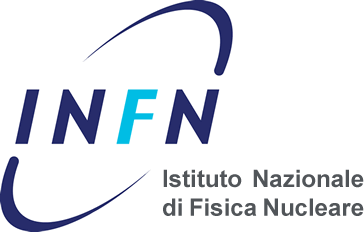
INFN
|
Istituto Nazionale di Fisica Nucleare
INFN is a research institute aimed at the study of the fundamental constituents of matter, which conducts theoretical and experimental research in the fields of sub-nuclear, nuclear, astroparticle and particle accelerator physics. This requires the use of cutting-edge technologies and instrumentation, which the INFN develops both in its own laboratories, and in collaboration with industries and institutions from all over the world. The Laboratori Nazionali di Frascati (LNF) is one of the four main laboratories of INFN. INFN has also addressed its R&D to linac based Free Electron Lasers (FEL), high brightness photo-injectors and accelerators for medical applications. Recently, new effort is devoted also to new acceleration techniques in the framework of the SPARC_LAB test facility at LNF. INFN is also the Association leader of the Eurogammas Consortium composed by European public Institutions (INFN, University of Rome "La Sapienza" and CNRS) and Private Companies (ACP S.A.S., Alsyom S.A.S., Comeb Srl and ScandiNova Systems AB). The Consortium is responsible for the construction of the Gamma Beam System that will be built in Magurele (Bucharest, Romania) in the context of the ELI-NP Research Infrastructure.
|
ITALY
|
|
P14

Kyma
|
Kyma S.r.l.
Kyma was established in August 2007 by Elettra Sincrotrone Trieste S.C.p.A. (E-ST), with the primary purpose to design, realize and install the undulators for the FERMI@Elettra project, namely the new Free-Electron Laser, at the time being built at the E-ST site in Basovizza, Trieste, Italy. Kyma has received in 2007 from Elettra Sincrotrone Trieste a twenty-five years know-how on the development and realization of insertion devices, which has been since then greatly developed, thanks to the industrial approach. All the insertion devices for FERMI project were successfully delivered on time, on specs, on budget.
In few years since its establishment (2007), Kyma became a reference supplier in the light source community. With almost fifty insertion devices designed and manufactured (plus sixty small “phase shifters”), Kyma is now recognized as a qualified partner for the design and development of this kind of equipment.
A strategic choice of the management makes Kyma the only company in the world whose unique business is the design, manufacturing and characterization of insertion devices and this decision allows Kyma’s organization and personnel to fully concentrate their attention and ever-growing know-how on insertion devices.
The company mission is therefore focused on insertion devices (undulators and wigglers) and its vision is to be able to supply equipment to any light source facility in the world.
|
ITALY
|
|
P15

SAPIENZA
|
University of Rome "La Sapienza"
The Department of Basic and Applied Sciences for Engineering at Sapienza University of Rome (SBAI) offers a wide variety of research activities and teaching at all levels. It was created by joining the Department of Mathematical Models and Methods for Applied Sciences, the Department of Energy and the Department of Engineering Chemistry Materials Environment. One of the groups of the department is specialized in the field of applied electromagnetism and accelerator physics. It has competencies in design, construction and radiofrequency measurements of accelerating devices. The group has designed and fabricated linear
accelerating and deflecting structures from S-band to X-band frequencies for both Travelling wave (TW) and Standing wave (SW) structures.
|
ITALY
|
|
P16
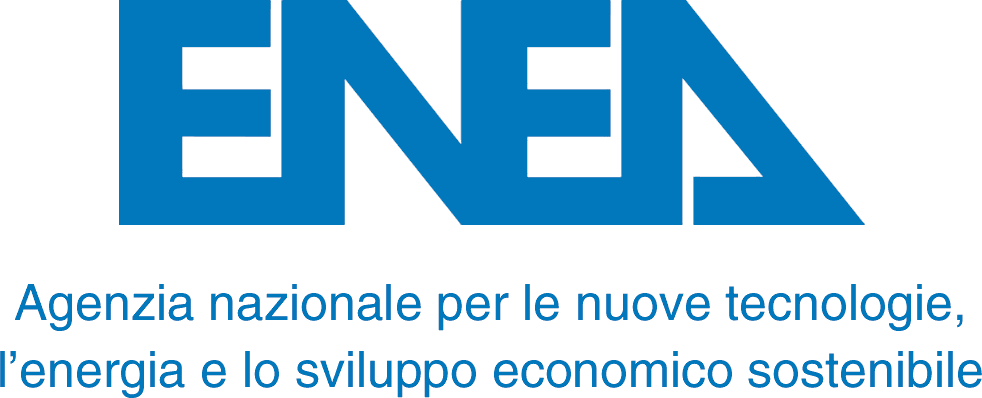
ENEA
|
Agenzia Nazionale per le Nuove Tecnologie, l'Energia e lo Sviluppo Economico Sostenibile ENEA
Our group pioneered the development of Free Electron Lasers (FEL) since the beginning. We have built our track record and expertise in the following fields: FEL design, realization and applications; Undulators design and development, Accelerator advanced technologies, Coherent intense radiation sources, Microwave cavities, Laser optics. In most of these cases, our group contributed from analytical Start-2-End simulations through realization and applications.
|
ITALY
|
|
P17
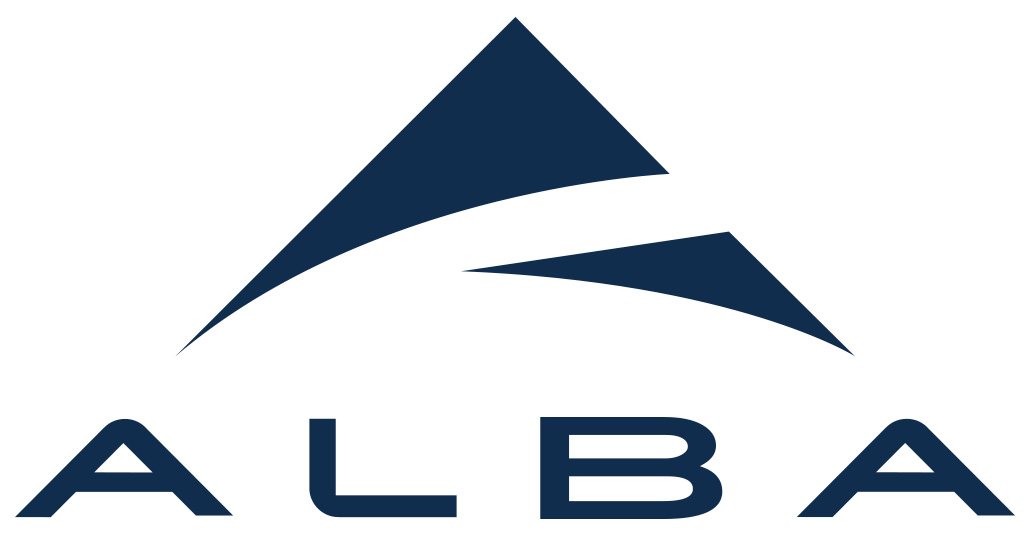
ALBA
|
Consorcio para la Construccion Equipamiento y Explotacion del Laboratorio de Luz Sincrotron
ALBA-CELLS was incorporated by agreement between the Ministry of Science and Technology of the Spanish Government and the Generalitat de Catalunya (Regional Government of Catalonia) on March 14 2003, and its purpose is the construction, equipment and later exploitation of a synchrotron light laboratory.
The main tasks, as defined in the ALBA – CELLS Strategic Plan are:
• Enhance expertise and promote the utilization of Synchrotron Light by working with the Spanish and international scientific communities;
• Keep itself at the forefront of Synchrotron Light Science by conducting and enabling competitive research and providing the most advanced SL technologies;
• Provide a state of the art Synchrotron Light service to the scientific and industrial communities and operate the ALBA facility with the highest efficiency, and with a clear user-oriented policy.
• Provide a multidisciplinary environment that fosters innovation through scientific and technical collaboration, mainly in the Synchrotron Light, accelerator sciences and related topics, always having the user community as a reference;
• Foster industrial involvement and partnerships, both using synchrotron light as a tool, developing instrumentation therein and doing technology transfer, thus promoting commercial opportunities and economic development, both in large and small-medium size industries;
• Promote the optimization of resources by offering the complementary capabilities developed at ALBA to other scientific and technological institutions via collaborative agreements;
• Contribute to the training of a highly skilled workforce that will feedback into science, industry and society;
• Actively participate in the development of the public perception of Science, and;
• Collaborate across borders to promote the exchange of people and ideas.
ALBA-CELLS Accelerator team is the first group within Spain that has dealt with the design, construction and operation of a complex accelerator infrastructure and has built up experience in all its technologies. It is now an active member of international collaborations for the state of the art accelerator physics and technology, offering key contributions to new synchrotron light facilities or other accelerator-based projects.
ALBA-CELLS has acquired and developed important know-how in the management of large scientific projects and follows best practice, with the capability to integrate and develop new equipment into a complex facility. CELLS has as well developed infrastructures and laboratories during the ALBA construction, like magnetic measurements, RF power, vacuum system, diagnostics and metrology laboratories, that are now available for future developments, and for establishing collaborations with other institutions, offering and sharing their utilization.
ALBA-CELLS RF Group -lead by Ms. Angela Salom- and the Linac Group –lead by Ms. Dr Raquel Muñoz- have ample know-how in their respective fields acquired during the design, commissioning and operation of the ALBA accelerators.
|
SPAIN
|
|
P18

CNRS
|
Centre National de la Recherche Scientifique CNRS
CNRS is a public organisation under the responsibility of the French Ministry of Education and Research. CNRS encourages collaboration between specialists from different disciplines, opening up new fields of enquiry to meet social and economic needs.
LAL is a CNRS Joint Research Unit with Université Paris-Sud will bring their expertise in the project: Operates PHIL photo-injector, and involved in the construction of a compact accelerator to be used as an X-ray source (ThomX) and a new high-performance electron Linac PRAE.
|
FRANCE
|
|
P19
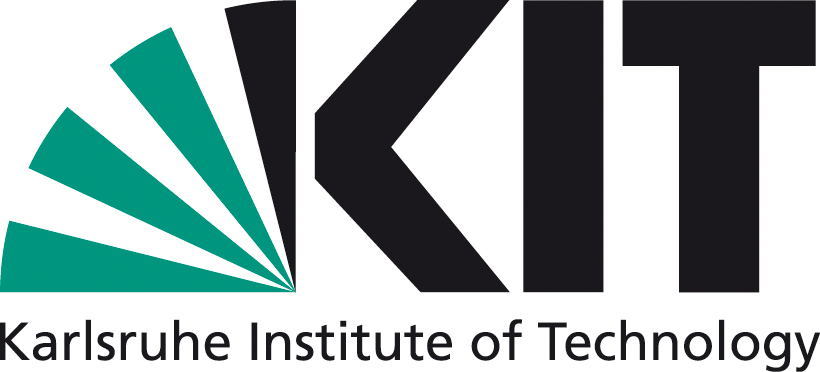
KIT
|
Karlsruher Institut für Technologie
KIT, the Research University in the Helmholtz Association, combines the traditions of a renowned technical university and a major large-scale research facility in a very unique way. It is one of the largest, most prestigious, and leading engineering and technology universities in Germany. KIT hosts the Accelerator Technology Platform (ATP) which comprises the accelerator test facilities ANKA, a storage-ring synchrotron radiation facility, and FLUTE, a compact linear accelerator, both operated by the Institute for Beam Physics and Technology (IBPT).
The KIT-IBPT and the associated Laboratory for Applications of Synchrotron Radiation (KIT-LAS) pursue R&D in the fields of superconducting insertion devices, advanced beam diagnostics and dynamics of ps and fs electron and photon beams. They have recognized expertise in the fields of
• Ultra-fast, high-rep-rate, high-resolution direct and indirect, transverse and longitudinal electron bunch diagnostics (development and application)
• specialized superconducting undulators for compact light sources (magnet design, beam dynamics and radiation simulation, application).
|
GERMANY
|
|
P20
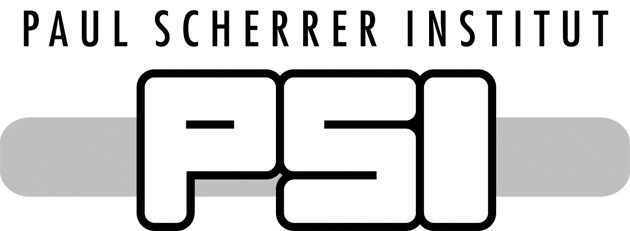
PSI
|
Paul Scherrer Institut PSI
PSI is the largest research institute for natural and engineering sciences within Switzerland. The Paul Scherrer Institute runs Switzerland's Large research facilities for users from the national and international scientific community, in particular for condensed matter, materials science and biology research. PSI is one of only two locations in the world providing the three complementary probes of synchrotron X-rays, neutrons and muons at one site. Since 2001 PSI offers high brilliant X-rays in the Swiss Light Source (SLS) and starting in 2017 in the hard x-ray Free Electron Laser SwissFEL.
|
SWITZERLAND
|
|
P21
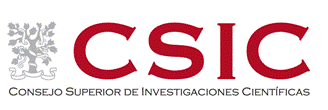
CSIC
|
Agencia Estatal Consejo Superior de Investigaciones Científicias
The Spanish National Research Council (CSIC) is the largest public institution dedicated to research in Spain and the third-largest in Europe. Belonging to the Spanish Ministry of Economy and Competitiveness through the Secretary of State for Research, Development and Innovation, its main objective is to develop and promote research that will help bring about scientific and technological progress, and it is prepared to collaborate with Spanish and foreign entities in order to achieve this aim. According to its Statute (article 4), its mission is to foster, coordinate, develop and promote scientific and technological research, of a multidisciplinary nature, in order to contribute to advancing knowledge and economic, social and cultural development, as well as to train staff and advise public and private entities on this matter. It has a staff of more than 13,000 employees, among these about 3,300 are permanent researchers and about 4,300 are pre- and post-doctoral researchers.
The CSIC has 70 fully own institutes or centres distributed throughout Spain. In addition, it has 53 Joint Research Units with universities or other research institutions. There is also a delegation in Brussels and Rome. CSIC has considerable experience in both participating and managing R&D projects and training of research personnel.
CSIC provides services to the entire scientific community through management of the Singular Scientific and Technological Infrastructures (ICTS) such as Calar Alto Astronomical Observatory, Doñana Biological Station, European Synchrotron Radiation Facility, Hesperides Ocean Research Vessel, Integrated Micro and Nanoelectronics Clean Room, Juan Carlos I Antarctic Base, Max Von Laue-Paul Langevin Institute and Sarmiento de Gamboa Ocean Research Vessel.
In the FP7 EU-Programme CSIC obtained 66 Marie Curie projects with 54 ITN and 28 IAPP. At the present H2020-Programme CSIC participates in 69 Marie Curie projects in which 16 are ITN and 9 are RISE. The institute of CSIC IFIC has participated in different generations of collider experiments, as DELPHI at the Large Electron-Positron collider at CERN and the CDF experiment at the Tevatron in FermiLab. Currently, it is deeply involved in the CLIC accelerator project and also in the program at the Large Hadron Collider (LHC), in ATLAS. IFIC has been recognized by the excellent Spanish programme called Severo-Ochoa. In this category, only about 20 Institutes over all Spain and among all science-technological areas have been awarded with the Severo-Ochoa distinction.
The IFIC has been active in instrumentation for accelerators and particle physics experiments and has been contributing to the accelerator and detector R&D for the LHC/HL-LHC, ILC and CLIC.
|
SPAIN
|
|
P22

UH/HIP
|
University of Helsinki - Helsinki Institute of Physics
The Helsinki Institute of Physics is very active in carry out and facilitate research in basic and applied physics as well as in physics research and technology development at international accelerator laboratories. The Institute has a proven experience in material science and breakdowns in high-gradient structures, in particular:
• development of mechanical design for next generation of CLIC module taking into account the full lifecycle: from manufacturing over the assembly, RF-conditioning, transportation, installation, alignment, the operation to failure scenarios
• Industrial collaboration for the development of manufacturing CLIC accelerating structures and other RF components.
|
FINLAND
|
|
P23

VU
|
VU University Amsterdam
The Vrije Universiteit (VU) Amsterdam is one of Europe’s most prominent research-led universities. It is leading in laser techniques to generate EUV and soft-X-ray laser light, which is to be used for FEL seeding. It co-operates with the Advanced Research Center for Nanolithography, the launching platform of FEL-NL.The research group of prof. Hoekstra (VU) is embedded in ARCNL, therefore the work and tasks taken up by the group are performed at ARCNL.
The Vrije Universiteit (VU) Amsterdam is a partner in the public-private partnership ARCNL (Advanced Research Center for Nanolithography), a Joint Research Unit founded in 2014 together with the Netherlands Organisation for Scientific Research (NWO), the University of Amsterdam (UvA), and the semiconductor equipment manufacturer ASML.
The research group of prof. Hoekstra (VU) is embedded in ARCNL; the work and tasks taken up by the group in this project will therefore be performed at ARCNL.
|
NETHERLANDS
|
|
P24
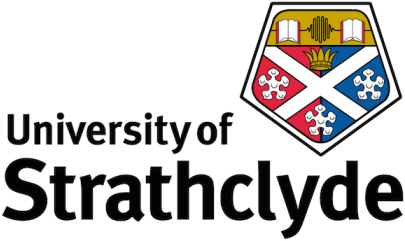
USTR
|
University of Strathclyde
The University of Strathclyde is a leading international technological university. It has received multiple awards including ‘UK University of the Year 2013’ and ‘UK Entrepreneurial University of the Year 2014’. It has 3,200 staff with 15,000 undergraduate students and 7.000 postgraduate students.
Adrian Cross and Kevin Ronald, the senior academics in the ABP group, have more than 25 years of research on incoherent high power millimetre wave sources. They lead a group with an internationally leading reputation in the field, with full capability for the electronic generation of very high power radiation in the GHz to THz frequency range. This capability covers theory development, numerical simulation and optimization, experimental demonstration and measurement and manufacturing realization. The ABP research group consisting of 5 academics, 10 post-doctoral researchers, 5 PhD students, 1 research technician and 4 visiting scientists is one of the largest university research groups working in the area of high power millimetre waves in the UK.
In 2013 the world’s highest power (10kW), continuously tuneable (88GHz to 102.5GHz) oscillator based on a “fast-wave” interaction with an electron beam was demonstrated at Strathclyde. This tuneable oscillator has recently (2017) been turned into an amplifier for future accelerators operating at higher frequencies, as well as other diverse application areas. An earlier breakthrough in fast wave amplifiers led to a particularly highly regarded impact statement for the 2014 Research Excellence Framework (REF) assessment. In this most recent UK government (REF) assessment of the quality of research in UK university departments the research of the ABP group contributed to the excellent result that rated our University of Strathclyde Physics department as the top Physics department in the UK.
The University has invested in an 800m2 internationally leading high power millimetre wave amplifier laboratory for the ABP group located in the new (2015) £90M Technology and Innovation Centre. There is a large group of excellent staff and students who work alongside the professorial and academic staff in a research-intensive environment with well-equipped facilities which includes 12.5T Superconducting Cryogen free magnet and £1M of test equipment including 20 GHz multi-channel deep memory digital oscilloscope; high performance 40 GHz spectrum analyser; 1.5 W, 90-96 GHz Quinstar solid-state driver; 2x2 and 2x3 multipliers; wideband 65-500 GHz Vector Network Analyser (VNA); thermionic cathode electron gun; high voltage power supplies; mm-wave diagnostics (£30k); electron beam diagnostics.
|
UNITED KINGDOM
|
|
P25

UniToV
|
University of Rome ‘Tor Vergata’
The Department of Physics of the University of Rome ‘Tor Vergata’ ranked n. 40 worldwide according to the 2020 edition of the Best Global Universities and third in Italy. The Physics Department is the fundamental landmark of the Tor Vergata University for Physics, both from the research point of view and the education. The Faculty staff is composed by 40 professors and 30 researchers.
The undergraduate and graduate education in Physics aims to the development of a broad background in basic physics and broadly applicable problem-solving skills. The students are prepared for careers in research and teaching at the school and university levels and careers in many other fields as well. The Department offers courses for bachelor and master degrees in Physics, Astronomy, Astrophysics, Space Science and in Material Science and Technology. A PhD program covers also all of these areas.
The Physics Department engages in theoretical and experimental research that spans most of the central topics of modern physics. There are research groups working in the areas of experimental high-energy physics, theoretical particle physics and string theory, theoretical and experimental condensed matter physics, astrophysics, biological physics and finally physics of complex systems. A Division of the Italian National Institute of Nuclear and Particle Physics is located in our Department.
|
ITALY
|
|
P26
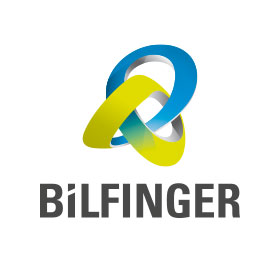
BNG
|
Bilfinger Noell GmbH
Bilfinger Noell GmbH is a company of Bilfinger SE. Operating worldwide in the product areas of nuclear service, nuclear technology and magnet technology, putting experience into practice with great success. Services range from developing, planning, delivering, and commissioning up to operating the delivered plants and the relevant equipment. Most of the more than 250 employees work in the field of engineering.
In close cooperation with customers, Noell develops and fabricates LTS and HTS superconducting magnet systems for research and industry. Noell has supplied components for large-scale projects such as the dipole magnets for CERN, Geneva, or the non-planar coils for the fusion experiment Wendelstein 7-X in Greifswald, Germany. For both projects, we started with the development of prototypes until the series fabrication of the magnets. In collaboration with the Karlsruhe Institute of Technology (KIT), we develop and design superconducting undulators to bring them to the market. Bilifinger Noell GmbH has successfully delivered SCU15 and SCU20 to KIT. Both devices are successfully operated in the KARA ring. With the design of SCU20 Noell was able to make the step from prototype to product with superconducting insertion devices. Bilfinger Noell has successfully fabricated and tested HTS prototype superconducting coils i.e. an undulator prototype coil (SCU) made out of YBCO, showing that the basic know-how is available.
We are also involved in the major international projects ITER and FAIR with studies, components and series production. From CERN, Noell received the “Golden Hadron Award”, an award which is granted to companies that exceeded the requirements of the customer in terms of technical performance, quality and cost-efficiency beyond the contractual obligations.
|
GERMANY
|

